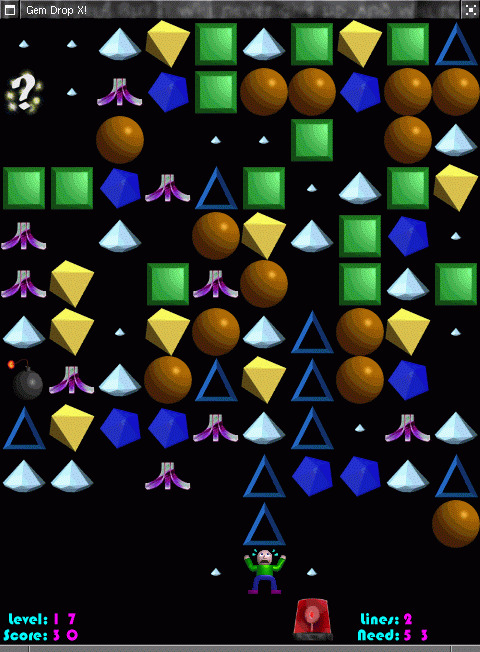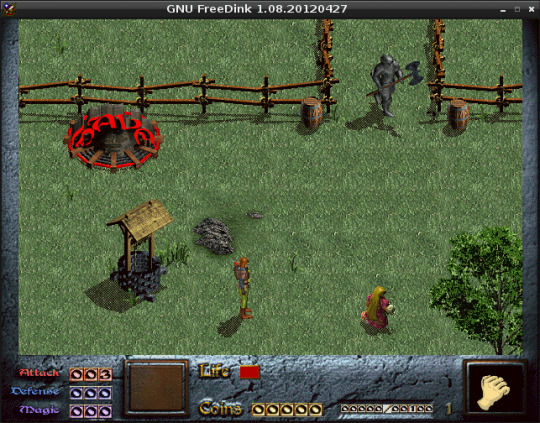#AmigaOS
Explore tagged Tumblr posts
Text






🎄💾🗓️ Day 13: Retrocomputing Advent Calendar -🎄Amiga 500 💾🗓️
The Amiga 500 is considered one of Commodore's most important home computers, introduced in 1987; it was important because of how advanced the features were for the time. It was based on a Motorola 68000 CPU running at 7.16 MHz in NTSC versions and at 7.09 MHz for PAL ones, with the main version of 512 KB RAM expandable up to 9 MB. Its OCS provided respectable graphics performance, going up to 736×567 interlaced, with 32 colors out of 4096. The sound system consisted of four 8-bit PCM channels and could give out stereo at as high as 28 kHz. With the keyboard integrated and a compact design, it was ready for home users, while the multitasking operating system, AmigaOS, differentiated it from the rest. At a price the market could afford and featuring multimedia capabilities, this combination contributed to its popularity as it went on to sell about 2.6 million units worldwide.
Making of the Amiga bouncing ball. https://www.generationamiga.com/2020/04/14/amiga-history-the-story-of-the-boing-ball/
Have first computer memories? Post’em up in the comments, or post yours on socialz’ and tag them #firstcomputer #retrocomputing – See you back here tomorrow!
#amiga500#commodore#amiga#retrocomputing#firstcomputer#1980s#computinghistory#vintageelectronics#oldschooltech#computerdesign#amigaos#technostalgia#motorola68000#classiccomputers#retrohardware#gamedevhistory#multimedia#pcm#keyboarddesign#personalcomputing#vintagetech#digitalnostalgia#computingmilestones#techhistory#nostalgicvibes#classicgames#homecomputing#ocschipset#computersound#retrogaming
164 notes
·
View notes
Text

Amiga - DiskCopier v1.0a (23.11.2024)
43 notes
·
View notes
Text
Qué lindo es tener amistades de las cuales podes ser vos misma. Amigas que más que amigas son como mis hermanas, las que están siempre. Cuando estoy mal sé que puedo recurrir a ellas, cuando estoy feliz es porque estoy con ellas. Ellas aunque no lo sepan me salvan, aunque no se los diga seguido las amo, y ojalá que nuestra amistad dure toda la vida porque me hacen bien y gracias por eso, gracias por ser parte de mi vida y hacerla un poquito más agradable y cálida.🤍✨
#frases#frases de amor#argentina#amor#desamor#citas de amor#frases en español#notas de amor#grunge#adolescentes#amistad#mejor amiga#amiga#commodore amiga#amigaos#amigas#best friends#best#besties
36 notes
·
View notes
Text

#do you know this game#myst#MacOS#Sega Saturn#PlayStation#3DO#Windows#Atari Jaguar CD#CD-i#AmigaOS#Pocket PC#this game is on Every Fuckin Thing so i tried to narrow it down#the thumbnail is from a VR version!
16 notes
·
View notes
Text
Gem Drop X
Gem Drop X – a fast-paced puzzle one-player puzzle game using the Simple DirectMedia Layer (SDL) libraries. It is a direct port of "Gem Drop," an Atari 8-bit game written in Action! https://archivegame.org/gemdropx/

2 notes
·
View notes
Text
Quiero amigos que me busquen si no saben nada de mí ¿Eso es mucho pedir?
-浪人
20 notes
·
View notes
Text
Efemérides Tecnologica: 31 de mayo - La historia de la computadora Amiga y su creador, Jay Miner

El 31 de mayo de 1932 nace Jay Glenn Miner, Padre de la computadora Amiga. Hoy quiero recordarlo con un artículo algo extenso donde narró la historia de la creación de este ordenador #retrocomputingmx #efemeridestecnologica #Amiga #jayminer https://retrocomputingmx.com/w3av
0 notes
Text
"MANDA EU ME ACALMAR MAIS UMA VEZ, MAIS UMA, UMA SÓ... PORCOS VOARAM; VACAS TOSSIRAM; CHOVERAM CANIVETES; VACAS IRÃO PARA O BREJO; COBRAS FUMARAM; O BICHO VAI PEGAR E COMER FICANDO OU CORRENDO; É SÓ MANDAR EU ME ACALMAR MAIS UMA VEZ!
#risos#amigaos#la divina comedia#raiva#relacionamento#amizade#fases da vida#vida adulta#gay love#notas de vida#brasil
0 notes
Text
eu nao posso ser vagabundo em paz q uma abelhinha no meu ouvido vem falar d enem e faculdade irmao vaiiiii se fuder
0 notes
Text
Bom dia amigos, tem novo video em meu canal Marcuslash, Desenho Seu Amigão da Vizinhança Homem-Aranha, comentem sugestões, compartilhem com seus amigo 😉🖖
youtube
#entretenimento#series#friendly neighborhood spider man#seu amigao da vizinhanca homem aranha#Youtube
0 notes
Text




Can't remember if I ever posted these properly: Some simple Borderlands icons I made in 2022 for AmigaOS's Workbench. Displayed in FS-UAE, and on Amiga hardware + CRT TV (badly photographed.) Due to the screenmode used, the icon files are half-height, and appear with double-height pixels on the screen.



#borderlands#amiga#commodore amiga#pixel art#surviving on a diet of random nerd stuff#nobody needed this to exist#probably not even me#but uh... it exists
68 notes
·
View notes
Text
I’ve been thinking about this for a little while — something I’d want to do if I had the time and money would be to design a Motorola 68000-powered tiny (10” or smaller) laptop. Modern CMOS 68K implementations are very power-efficient and decently well-suited to handheld and portable devices (see: TI-92 series), and if combined with a crisp, modern monochrome OLED display, could get you days of continuous usage without needing a recharge! Add a few megabytes of RAM, some peripherals (IDE/CF controller, ISA or S-100 slots, DMA controller, SPI bus, RS-232 port, SD or CF slot, PS/2 port for a mouse, text mode + hires monochrome video card, etc…), and you have a nice, flexible system that can be rarely charged, doesn’t require ventilation, and can be just thick enough to fit the widest port or slot on it.
The main issue would be software support: nearly all existing operating systems that ran on a 68K were either intended for very specific hardware (Classic Mac OS, AmigaOS) or required more than a flat 68000 (NetBSD, Linux, or any other UNIX requiring MMU paging). So, it would probably end up being a custom DOS with some multitasking and priv level capability, or perhaps CP/M-68K (but I don’t know how much software was ever written for that — also, it provides a “bare minimum” hardware abstraction of a text-mode console and disk drive). A custom DOS, with a nice, standard C library capable of running compiled software, would probably be the way to go.
The software question perhaps raises another, harder question: What would I use this for? Programming? Then I’d want a text editor, maybe vi(m) or something like that. OK. Vim just needs termcap/(n)curses or whatever to draw the text, and not much else. That’s doable! You’d just need to provide text-mode VT100 emulation and termcap/curses should “just work” without too much issue. I like writing C, so I’d need a compiler. Now, I’m assuming this simplistic operating system would be entirely written in a combination of assembly language (to talk to hardware and handle specific tasks such as switching processes and privilege management and whatnot) and C (to handle most of the logic and ABI). I could probably cross-compile GCC and be good to go, aside from handling library paths and executable formats that don’t comply with POSIX (I have no intention of making yet another UNIX-like system). Hopefully, most other command-line software (that I actually use) will follow suit without too much trouble. I don’t know how much work it is to get Python or Lua to a new platform (though NetBSD on the 68K already supports both), but Python (or Lua) support would bring a lot of flexibility to the platform. Despite me being a Python hater, I must admit it’s quite an attractive addition.
What about graphics? All the software I’ve mentioned so far is text-mode only, yet historical 68K-based systems like the Mac and Amiga had beautiful graphics! Implementing X11 would be a massive pain in the ass, considering how much it relies on UNIXy features like sockets (not to mention the memory usage), and I really don’t want Wayland to have anything to do with this. I guess I’d have to roll my own graphics stack and window manager to support a WIMP interface. I could copy Apple’s homework there: they also made a monochrome graphics interface for a M68K configured with a handful of MiB of RAM. I could probably get a simple compositing window manager (perhaps make it tiling for a modern vibe ;3). Overall, outside of very simple and custom applications, functionality with real software would be problematic. Is that a big problem? Maybe I want an underpowered notebook I can put ideas and simple scripts down on, then flesh them out more fully later on. An operating system allowing more direct access to the hardware, plus direct framebuffer access, could yield some pretty cool graphing/basic design utility.
I’d need a way to communicate with the outside world. An RS-232 UART interface, similar to the HP-48 calculator (or the TI-92’s GraphLink, only less proprietary) would help for providing a remote machine language monitor in the early stages, and a real link to a more powerful (and networked) machine later on. I think real networking would defeat the purpose of the machine — to provide a way to remove yourself from modern technology and hardware, while retaining portability, reliability, and efficiency of modern semiconductor manufacturing techniques. Giving it a CF or SD slot could provide a nice way to move files around between it and a computer, maybe providing software patches. A floppy drive would be amazing: it would provide a way to store code and text, and would be just about the right storage size for what I want to do. Unfortunately, there’s not really a good way to maintain the size of the laptop while sticking a 3.5” (or worse, 5.25”) floppy drive in the middle of it. To my knowledge, 3.5” floppy drives never got thin enough to properly fit with all the other expansion slots, socketed components, and user-modifiable parts I’d want. A completely solid-state design would likely be the best option.
Anyway, uhh… I hope this made some semblance of sense and I don’t sound insane for going on a rant about building a modern computer with a 1979 CPU.
5 notes
·
View notes
Text


AmigaTText v1.5
17 notes
·
View notes
Text

In July of 1985 Commodore released their Amiga 1000 as part of their Amiga line. Two years later it was discontinued. It ran off a Motorola 68000 processor and AmigaOS 1.0. Similarly to the Macintosh 128K, the Macintosh 512k, and the Macintosh Plus, it had a 4P4C modular connector for a keyboard attachment.
7 notes
·
View notes
Text
FreeDink
GNU FreeDink – a portable version of the game engine, which runs the original game as well as its D-Mods, with close compatibility, under multiple platforms https://archivegame.org/freedink/

3 notes
·
View notes